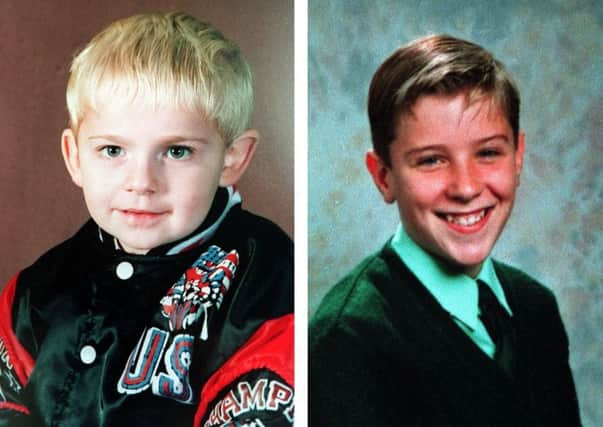Declassified files: Document sets out how IRA lied about Warrington bomb warning


In the aftermath of the attack, which killed three-year-old Johnathan Ball and 12-year-old Tim Parry, the IRA claimed that it had given the authorities detailed information which could have saved their lives by evacuating the area.
An IRA spokesman quoted by Reuters in the immediate aftermath of the fury which followed the bombing, said: “You don’t provide warnings if it is your intention to kill.”
That was always denied by the police and by the government.
Advertisement
Hide AdAdvertisement
Hide AdNow a document in a file declassified at the Public Record Office in Belfast shows that the version of events which the Home Office sent to Downing Street in the immediate aftermath of the bomb was consistent with the public denials that there had been clear warnings.
The two-page timeline of how the attack unfolded was sent to Number 10 two days after the bombing with a covering note by the home secretary’s private secretary, Miss J MacNaughton.
She said that the timeline dealt specifically with “the police denials of the terrorists’ claim to have given adequate and precise warning”.
Referring to the inaccurate claim by the IRA that it had given warnings which could have prevented deaths or injuries, she said that “we are considering what our approach should be for the future to this increasingly common terrorist tactic”.
Advertisement
Hide AdAdvertisement
Hide AdShe said that the government’s strategy was to deny terrorists “widespread news coverage of the results of their activities” by senior government figures “eschewing high profile statements”.
Alongside that, she said that the government wanted to “take advantage of opportunities to reinforce the pointlessness of PIRA’s actions, keeping the focus on the victims, and to counter any backlash against the Irish community generally”.
The two-page synopsis set out the Home Office’s understanding of what had happened: “At 8am on Saturday, 20 March, a male caller with a heavy Irish accent telephoned the office of the Samaritans in Manchester warning that a bomb had been placed at Manchester Piccadilly and that it would explode in 30 minutes.
“The codeword which he gave, as reported to the police, was not a recognised PIRA codeword, but in retrospect it bore a vague superficial similarity. There was no explosion, no device was found and the warning was later discounted as a hoax.
Advertisement
Hide AdAdvertisement
Hide Ad“At 11.58am the Samaritans office in Merseyside was telephoned by a male caller with a heavy Irish accent who said that a bomb had been placed outside Boots, and in response to a request for clarification indicated that he was talking about the centre of Liverpool.
“He also quoted an unrecognised codeword, different from the earlier one but again, in retrospect, bearing some resemblance to the one normally used by PIRA. He gave a 30 minute warning.”
The document went on: “In response to this call the Merseyside Police cleared the areas around a number of Boots premises in the city. However, at 12.25pm a bomb exploded in a litter bin in Bridge Street, Warrington.
“This was followed within a minute by a second explosion, again in a litter bin, nearby. Army bomb disposal experts have estimated the explosive charge as comprising about 0.5lb of high explosive.
Advertisement
Hide AdAdvertisement
Hide Ad“A three year old child was killed immediately and 56 people were taken to hospital with injuries, about five of which were described as extremely serious.
“A 12-year-old boy remains critically ill and four other people are still seriously ill.”
The note said that the police had “firmly rebutted” the IRA claim that there were “precise and adequate warnings beforehand”, adding of that IRA claim: “This is, of course, quite untrue.
“No call in which Warrington was mentioned was received.”